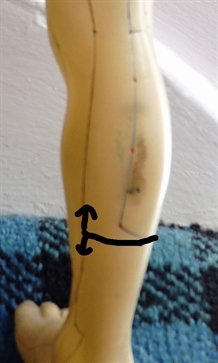Subscribe to the Newsletter
If you are interested in understanding how Traditional Chinese Medicine can improve your life sign up to my newsletter for the latest updates.
The Bladder Luo-connecting channel is quite short, but still very influential in what it does. It is an acupuncture channel, and its pathway and properties were discovered by the Chinese well over 2000 years ago.
Note to readers! …
This page is a bit abstruse if you’re a beginner. It’s not that the words are any, or at least, much, more difficult than on other pages, but this is about a subject usually taught some way into acupuncture courses.
So some of the concepts need your familiarity with other ideas in Chinese medicine.
Actually, I did this page, and other luo-connecting channel pages, for a few insistent patients, and for me.
It means I can look up both the channel and its symptoms on my smartphone in case I forget them.
If it helps others, great.
For more information about this type of acupuncture channel, click on luo-connecting channels.

Luo-connecting channels have great influence. This means Bladder 58 can be very effective at removing stuck Qi along the channel’s pathway, and also from areas influenced by it or by the Kidneys. For example,
Knowing how to treat the Luo-connecting vessels gives acupuncturists great flexibility and understanding of how pain and discomfort accumulate in the body, and how this trapped Qi can be helped.
The luo-connecting points have many attributes, including the ability to stop bleeding and ease pain.
They also have mental potential, helping to calm patients when used correctly for the appropriate syndromes. In so far as I’ve been able to discern the specific mental condition for the Bladder luo, it seems to be that of a slightly frightened or worried resignation, with irritation at the physical conditions such as back pain or bleeding haemorrhoids.

Stay in Touch!
No spam, only notifications about new articles and updates.

Book a Video consultation if you want to know more about your symptoms

Why You get Nervous Stomach Anxiety and How to Handle It. Acupuncture has great ways to help.
Subscribe to the Newsletter
If you are interested in understanding how Traditional Chinese Medicine can improve your life sign up to my newsletter for the latest updates.
Subscribe to the Newsletter
If you are interested in understanding how Traditional Chinese Medicine can improve your life sign up to my newsletter for the latest updates.